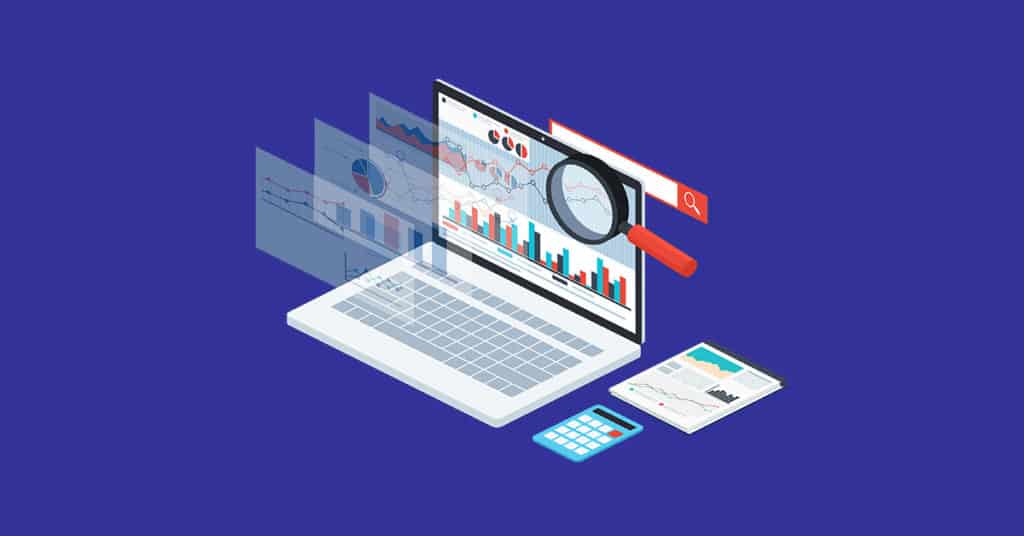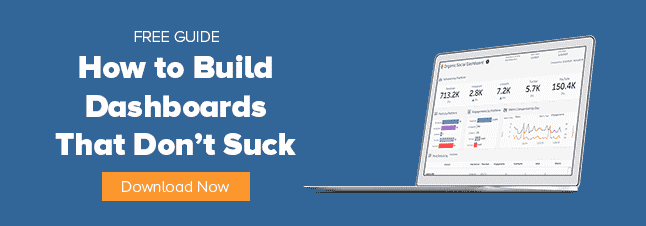
Benchmarking marketing performance is essential for agencies because it allows you to answer the only question that clients really care about: “So what?”
Great news, Tonya! Last month’s media buy generated 972,000 impressions!
That’s nice, Bill, but … so what? I mean, is that good? Could it be better? Is that a respectable number for our industry? How does it compare to our other lines of business?
Benchmarking marketing performance gives you the power to put your performance in context, so you can determine if your results are awesome or abysmal.
Without this information, you’re essentially operating blind, with no way to know if you should change tactics ASAP or double-down on media that’s performing exceptionally well. You need that insight so you can show clients the money they’re investing in marketing (and your services) is valuable.
How to Improve Your Agency’s Benchmarking
A lot of agencies already use some form of benchmarking, allowing their clients to compare their Q2 numbers to Q1 or the previous year. Or they create an average of all their clients’ performance, so they can contrast individual results to that index.
But what if you want to ask more complex questions? Maybe you need to see how a client’s recent campaign stacks up against the historical average for campaigns that use a similar media mix. You might want to compare their results to other clients from the same industry vertical who ran similar campaigns during the fall season.
Those kinds of benchmarks are harder to create, but not impossible. It all goes back to data and the contextual information you may have about it.
Benchmarking requires a great deal of data, especially historical data, so you’ll need an analytics platform that performs at that scale and that can give you quick access to the necessary data. The ideal platform should gather marketing, media and sales data from all the sources that you’re reporting on and then store everything in a persistent, actively managed data warehouse.
You also need a standardized data strategy so data is aligned to a common set of metrics and dimensions. Otherwise, you could be comparing apples to oranges.
This standardized dataset is the linchpin of a more powerful benchmarking program. It’ll make it possible for you to explore any question you have, almost instantly.
(Don’t have the time or ability to build something like this? You might be interested in Alight’s new MasterView product, an enhanced dataset created by our team of data experts.)
How Your Agency Can Benefit from Benchmarking Marketing Performance
Once you’ve set up a framework for benchmarking performance data, you’ll have the ability to undertake some really interesting projects.
- You could create marketing dashboards dedicated to benchmarking, giving your analysts or your clients the ability to assess a specific account’s performance on a variety of metrics.
- If you have multiple clients in a specific industry, you could create a dedicated report that shows the average marketing metrics for that vertical — an index that you can use internally to guide media buys or that you share (for a fee) with clients.
- You could apply statistical modeling to quickly identify outliers that you might otherwise overlook.
Benchmarking marketing can be a powerful way for your agency to increase its understanding of campaign performance and continuously refine tactics. By investing in the necessary framework and processes, you’ll boost your team’s ability to produce game-changing results that strengthen your relationships with clients.
Turn Analytics Into a Profit Center for Your Agency
Download Alight’s free eBook, “The Agency’s Guide to Making Money with Analytics,” to learn how to make your insights and reporting a competitive advantage.

